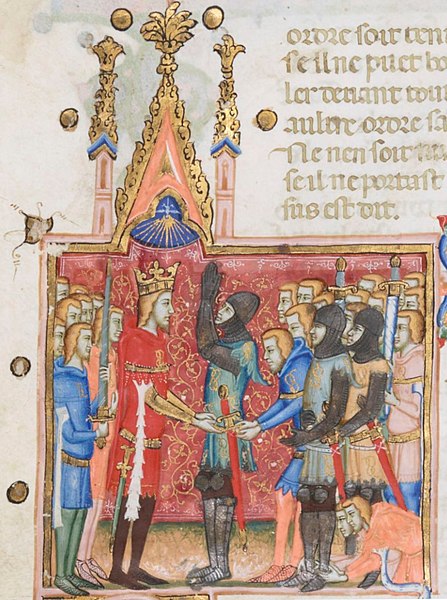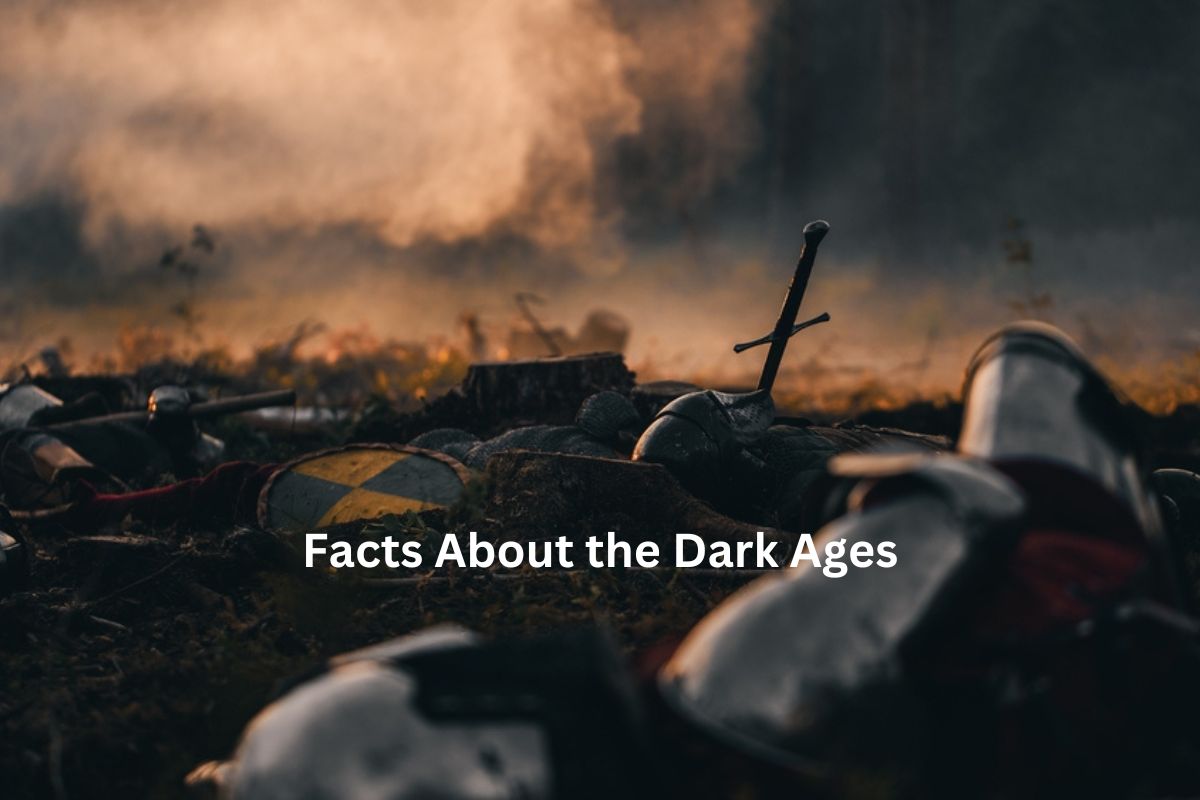The term “Dark Ages” refers to the early medieval period in Europe, from the 5th to the 10th century, following the fall of the Western Roman Empire.
While this era is often characterized by limited historical records and significant disruptions, it played a pivotal role in shaping the course of European history, leading to the emergence of feudalism, the spread of Christianity, and the groundwork for the later Middle Ages.
Dark Ages Facts
1. Followed the fall of the Western Roman Empire
The Dark Ages, also known as the Early Middle Ages, emerged in the wake of the Western Roman Empire’s disintegration in the 5th century.
This pivotal event, often attributed to a combination of internal decay, external invasions by barbarian groups, and economic instability, led to the collapse of Roman authority in Western Europe.
Also Read: Facts About Feudalism
The withdrawal of Roman governance left a power vacuum, with various successor states and regional rulers vying for control.
As a result, the political landscape of Europe transformed significantly during this time, marking the transition from classical antiquity to the medieval period.

2. Characterized by limited written records
The term “Dark Ages” partially stems from the scarcity of written records and historical documentation compared to earlier periods. This relative lack of primary sources challenges historians in reconstructing the history of this era.
Also Read: Timeline of the Dark Ages
Factors contributing to this dearth of written records include the disruption of educational institutions, the decline in urban life, and the general instability of the time.
Many valuable texts from antiquity were lost or deteriorated during this period, resulting in a knowledge gap that persisted until the revival of learning in the High Middle Ages.
3. Marked by barbarian invasions and the fragmentation of Europe
The Dark Ages witnessed a series of barbarian invasions that had profound impacts on the political and social landscape of Europe.
Groups like the Visigoths, Vandals, Huns, and others invaded and settled in various regions, displacing Roman authority. These migrations contributed to the fragmentation of Europe into smaller kingdoms and territories, each with its own local rulers and systems of governance.
This fragmentation laid the foundation for the development of feudalism, a decentralized system of land ownership and loyalty, which became a defining characteristic of medieval society.
The arrival of these barbarian groups brought about significant cultural exchanges and transformations, as they interacted with the remnants of Roman culture and institutions.
4. Saw the spread of Christianity and the rise of monastic communities
Despite the challenges and uncertainties of the Dark Ages, the spread of Christianity continued unabated. In fact, the early medieval period played a crucial role in the Christianization of Europe.
Monastic communities, consisting of monks and nuns who withdrew from the secular world to live lives of contemplation and religious devotion, played a pivotal role in preserving Christian teachings and knowledge.
Monasteries served as centers of learning, where manuscripts were meticulously copied, and scholars conducted theological studies.
This preservation of knowledge and the moral and spiritual guidance offered by these monastic communities were essential in maintaining a sense of continuity in a time marked by political instability.
5. Developed the feudal system
The Dark Ages witnessed the gradual emergence of the feudal system, a social and economic structure based on land ownership and loyalty to local lords.
In this system, land was the primary source of wealth and power, and it was often granted in exchange for military service or other forms of loyalty.

Feudalism created a hierarchical society, with kings or monarchs at the top, followed by nobles, knights, and peasants.
While it provided some stability in an otherwise tumultuous period, it also led to localized and fragmented authority, making centralized rule difficult.
6. Included Charlemagne’s rule and the Carolingian Renaissance
One notable figure of the Dark Ages was Charlemagne, or Charles the Great, who ruled over the Frankish Empire in the late 8th and early 9th centuries. His reign marked a brief but significant resurgence of learning and culture known as the Carolingian Renaissance.
Charlemagne supported educational and intellectual endeavors, promoting the preservation and copying of classical texts.
Under his rule, scholars like Alcuin of York played key roles in reviving learning and promoting the use of the Carolingian minuscule script, which influenced the development of modern European handwriting.
This revival of learning laid the groundwork for the intellectual and cultural blossoming of the High Middle Ages.
7. Witnessed Viking raids and settlements
The Dark Ages also marked the age of Viking expansion and raids, which began in the late 8th century and continued into the 11th century.
The Vikings, seafaring warriors from the Nordic regions, launched raids along the coasts and riverways of Europe, often striking unsuspecting communities.
Their swift longships allowed them to navigate shallow waters and access inland areas, making them a formidable force.
These Viking raids disrupted coastal regions and led to the establishment of Viking settlements in various areas, including the British Isles, Ireland, Normandy, and Iceland.
Over time, some Viking leaders transitioned from raiding to governance, contributing to the cultural and political mosaic of medieval Europe.
8. Concurrent with the Islamic Golden Age
While Europe experienced the Dark Ages, the Islamic world was undergoing a period of great intellectual and cultural flourishing known as the Islamic Golden Age.
From the 8th to the 13th century, Islamic scholars made significant advancements in various fields, including mathematics, astronomy, medicine, philosophy, and literature.
They preserved and expanded upon the knowledge of ancient Greece, Rome, India, and Persia, which later influenced Europe during the Renaissance.
This contrast between the relative stagnation in Europe and the flourishing of knowledge in the Islamic world underscores the complexity and interconnectedness of global history during this time.
9. Known for manuscript illumination and art
Despite the overall decline in written records, the Dark Ages witnessed the flourishing of art forms like manuscript illumination.
Monks and scribes meticulously crafted illuminated manuscripts, adorning them with intricate illustrations, decorative borders, and colorful illustrations.
These illuminated texts were not only religious but also included works of literature and scientific knowledge. The art of this period, characterized by its intricate interlace patterns and Christian iconography, played a vital role in preserving cultural and religious traditions.
10. Transitioned to the High Middle Ages around the 11th century
The Dark Ages eventually gave way to the High Middle Ages around the 11th century. This transition marked a resurgence of learning and culture in Europe.
Universities began to form, providing structured education, and the construction of impressive Gothic cathedrals signaled renewed economic and architectural vitality.
The High Middle Ages saw the revival of trade, the emergence of powerful kingdoms, and a renewed interest in classical texts from antiquity.
This period set the stage for the later medieval era, characterized by further advances in philosophy, science, art, and exploration, ultimately leading to the Renaissance and the dawn of the modern age.
